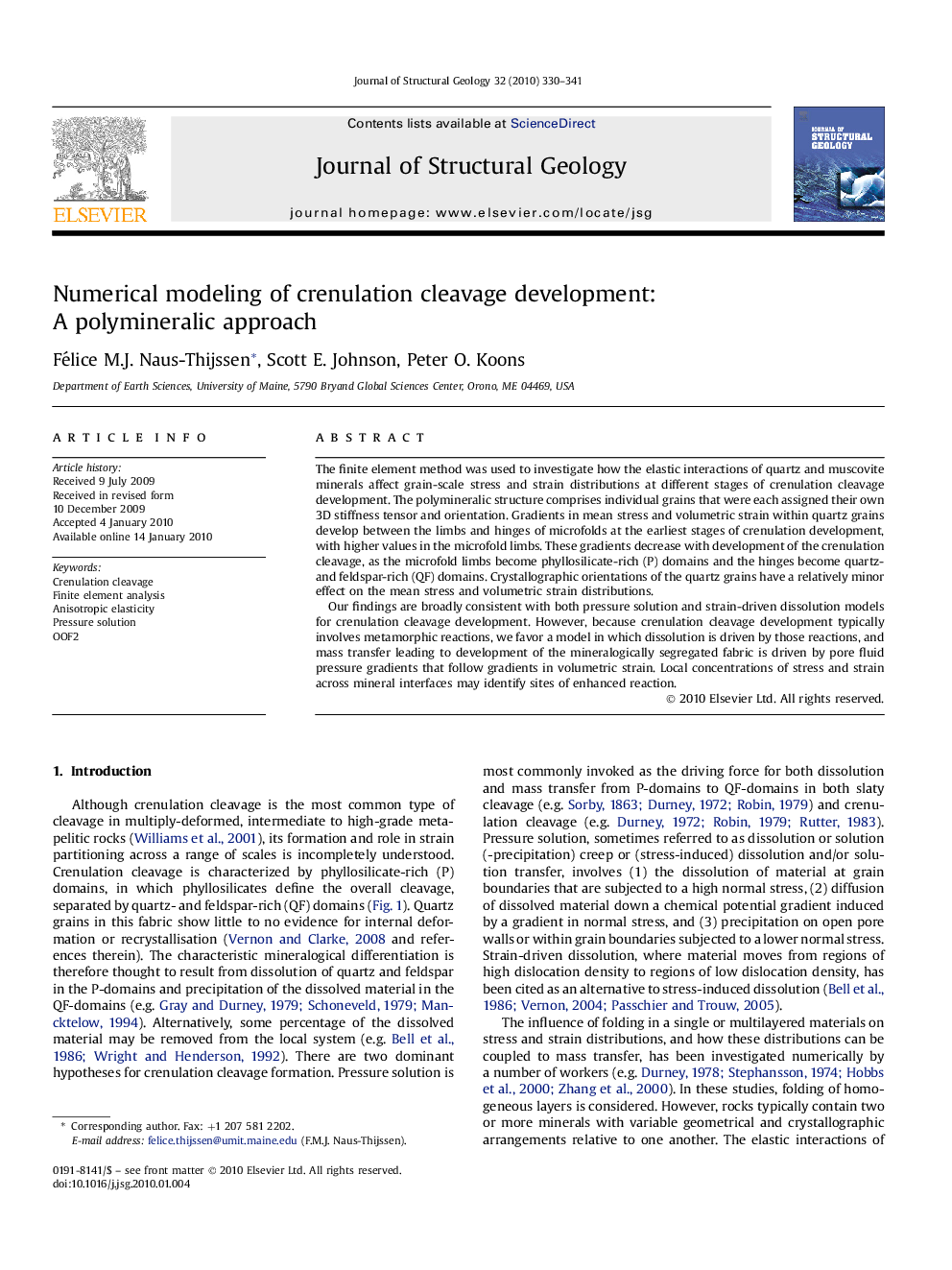| کد مقاله | کد نشریه | سال انتشار | مقاله انگلیسی | نسخه تمام متن |
|---|---|---|---|---|
| 4734047 | 1357068 | 2010 | 12 صفحه PDF | دانلود رایگان |

The finite element method was used to investigate how the elastic interactions of quartz and muscovite minerals affect grain-scale stress and strain distributions at different stages of crenulation cleavage development. The polymineralic structure comprises individual grains that were each assigned their own 3D stiffness tensor and orientation. Gradients in mean stress and volumetric strain within quartz grains develop between the limbs and hinges of microfolds at the earliest stages of crenulation development, with higher values in the microfold limbs. These gradients decrease with development of the crenulation cleavage, as the microfold limbs become phyllosilicate-rich (P) domains and the hinges become quartz- and feldspar-rich (QF) domains. Crystallographic orientations of the quartz grains have a relatively minor effect on the mean stress and volumetric strain distributions.Our findings are broadly consistent with both pressure solution and strain-driven dissolution models for crenulation cleavage development. However, because crenulation cleavage development typically involves metamorphic reactions, we favor a model in which dissolution is driven by those reactions, and mass transfer leading to development of the mineralogically segregated fabric is driven by pore fluid pressure gradients that follow gradients in volumetric strain. Local concentrations of stress and strain across mineral interfaces may identify sites of enhanced reaction.
Journal: Journal of Structural Geology - Volume 32, Issue 3, March 2010, Pages 330–341